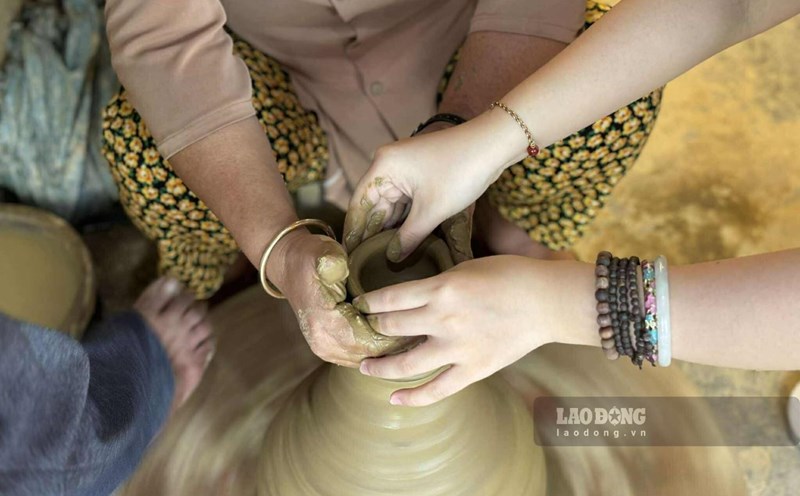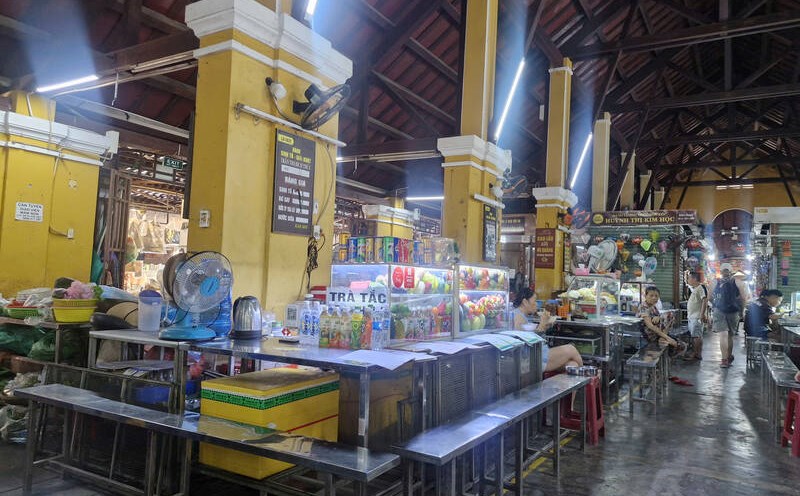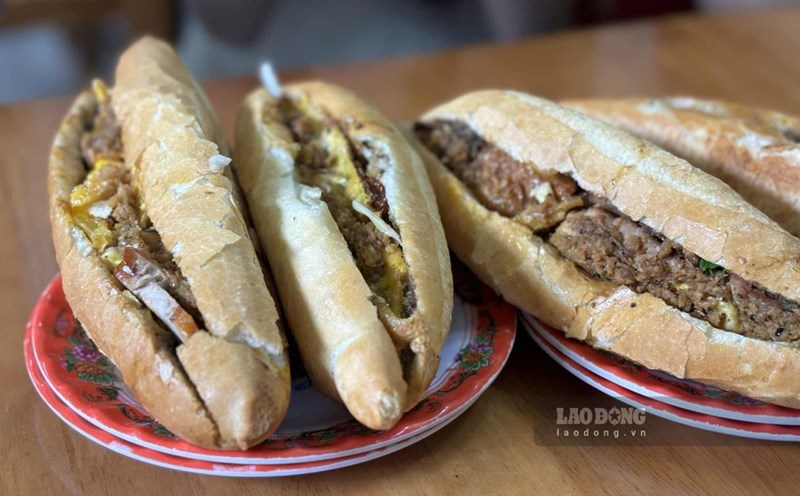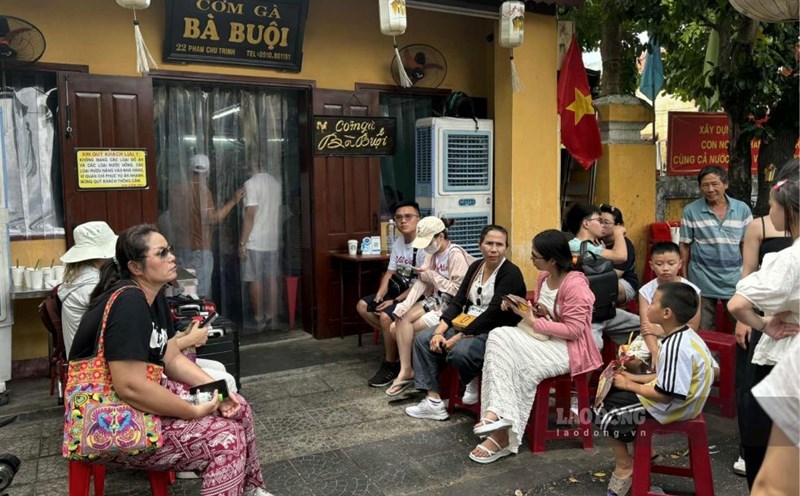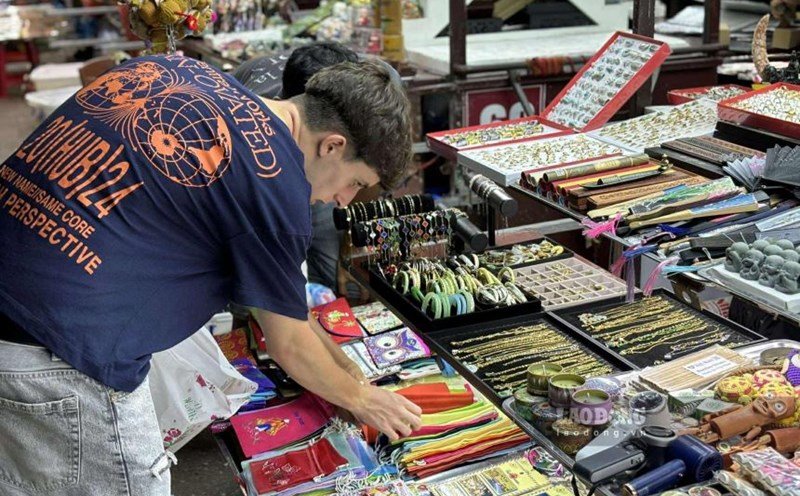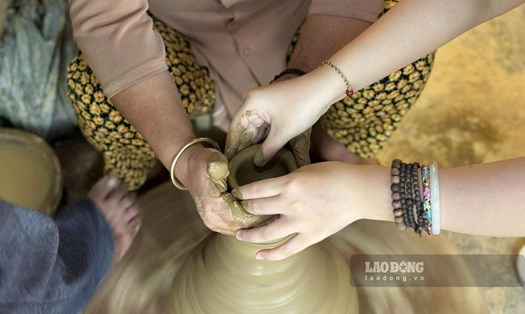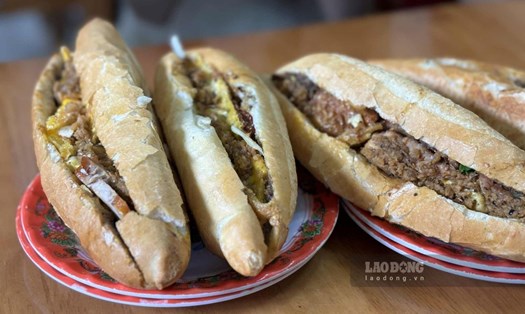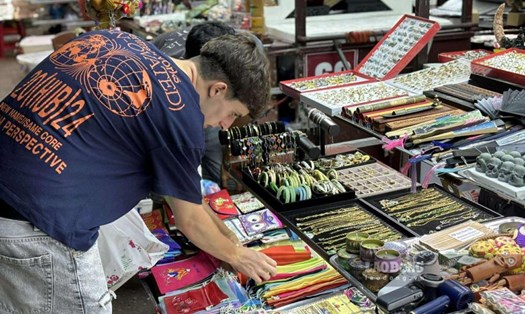In the heart of the peaceful Hoi An ancient town, located on Tran Phu Street, there is a structure bearing the mark of the Chinese community, both ancient and prestigious, which is the Quang Trieu quan (also known as the Quang Dong quan).
This is not only an attractive destination for tourists on their journey to explore Hoi Street, but also a vivid testament to the diverse cultural exchange of the once bustling international port city.
The shop was built in 1885, when Hoi An port was still the busiest trading place in Southeast Asia. During the 15th - 19th centuries, many Chinese traders settled and established businesses in Hoi An, and together built clubs to meet, worship and support each other.
Up to now, Hoi An still has 5 large shops: Fujian, China (Ngu Bang shops), Trieu Chau, Quynh Phu and Quang Trieu, of which Quang Trieu shops are considered the most typical and most beautiful works and attract a large number of visitors.
Initially, the communal house was built to worship the Holy Mother and Confucius, and in 1911 it was converted to worship the famous general Quan Cong - a famous general in Chinese history, the symbol of "Trung - Nghia - Tin - Tri - Nhan - Dung". For traders, worshiping Quan Cong shows faith in integrity and luck in business.
The most impressive thing when coming to Quang Trieu quan is the sophisticated architecture, bearing the strong imprint of Hunan culture. The entire structure is covered with Yin-yang tiles, the decorative details are all manufactured in China and then transported by boat to Hoi An for installation.
Right from the Tam Quan gate, visitors can admire the vibrant carvings of dragons, phoenixes, and lion calves. In the middle of the main yard, the prominent is the dragon fountain according to the "water snakehead fish" - a snake wrapped in carp sprayed with water to play, surrounded by many ornamental plants and harmonious miniatures.
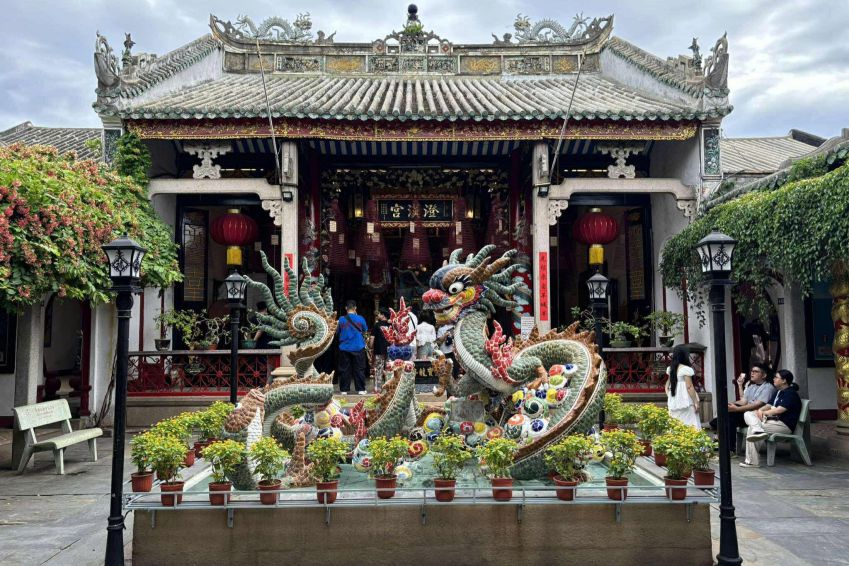
The space inside the main hall is solemnly and grandly designed with a system of precious wooden columns and elaborate carvings. The main stand between the worship of Quan Cong and the two battle coats Bach Ma and Xich Tho; the two booths next to the worship of Tai Bach Tinh Quan and Phuoc Duc Chanh Than.
The large and small statues are all exquisitely crafted, gilded with gilded lacquer, and have maintained their brilliance and solemnity for centuries. Behind the main hall is the airy back hall, with an additional fountain and a meticulously carved Quan Van Truong relief.
Quang Trieu apartments Association is not only outstanding for its architecture but also preserves many valuable artifacts. Antique artifacts such as wooden tables and chairs, ceramics... or Quan Cong paintings are considered 100-year-old treasures, reflecting the history of the formation and life of the overseas Chinese community in Hoi An.
This is also the reason why this place is considered a "living museum" in the heart of the old town.
In addition to its architectural value, the Quang Trieu Club is also home to many traditional festivals associated with the Chinese community. On the 15th of January every year, the Lunar New Year is solemnly celebrated with worship, lion dance, and folk art performances, carrying the meaning of praying for peace and blessings for the whole year. The 24th day of the 6th lunar month is the Quan Cong Festival, one of the major events, attracting a large number of people and tourists, contributing to the liveliness of Hoi Street.
The restaurant is open every day, usually from 7am to 5pm (some times extend the time to welcome guests until evening). Visitors should check at the information table in front of the gate for accurate updates.
The Quang Trieu quan festival is not only a stop to explore architecture and culture, but also a vivid testament to the cultural exchange process between Vietnam and China for many centuries.
In the heart of the quiet Hoi An street, the club still quietly preserves the spiritual values of the community, and at the same time becomes one of the important highlights in the journey to explore Hoi An heritage.
Hoi An ancient town is a land rich in historical and cultural traditions, once a bustling urban - commercial port in the 17th - 18th centuries. During the trading process, many Chinese traders settled down, established businesses and organized into 5 states: Guangdong, Fujian, Zhejiang, Hainan and Zhejiang. Each state has built community facilities such as schools, hospitals, cemeteries, pagodas and especially clubs, both for worship and for meetings and common activities.
To date, Hoi An has preserved Quan Cong Temple and 5 communal houses of the Chinese community. Of which, 4 clubs are associated with four separate states: Phuc Kien, Trieu Chau, Quynh Phu, Quang Trieu, and Quang Dong. The Chinese restaurant association (64 Tran Phu) is a common place for the 5 states, and is also a gathering place for members of the state of Zhejiang, which does not have its own restaurant association.

